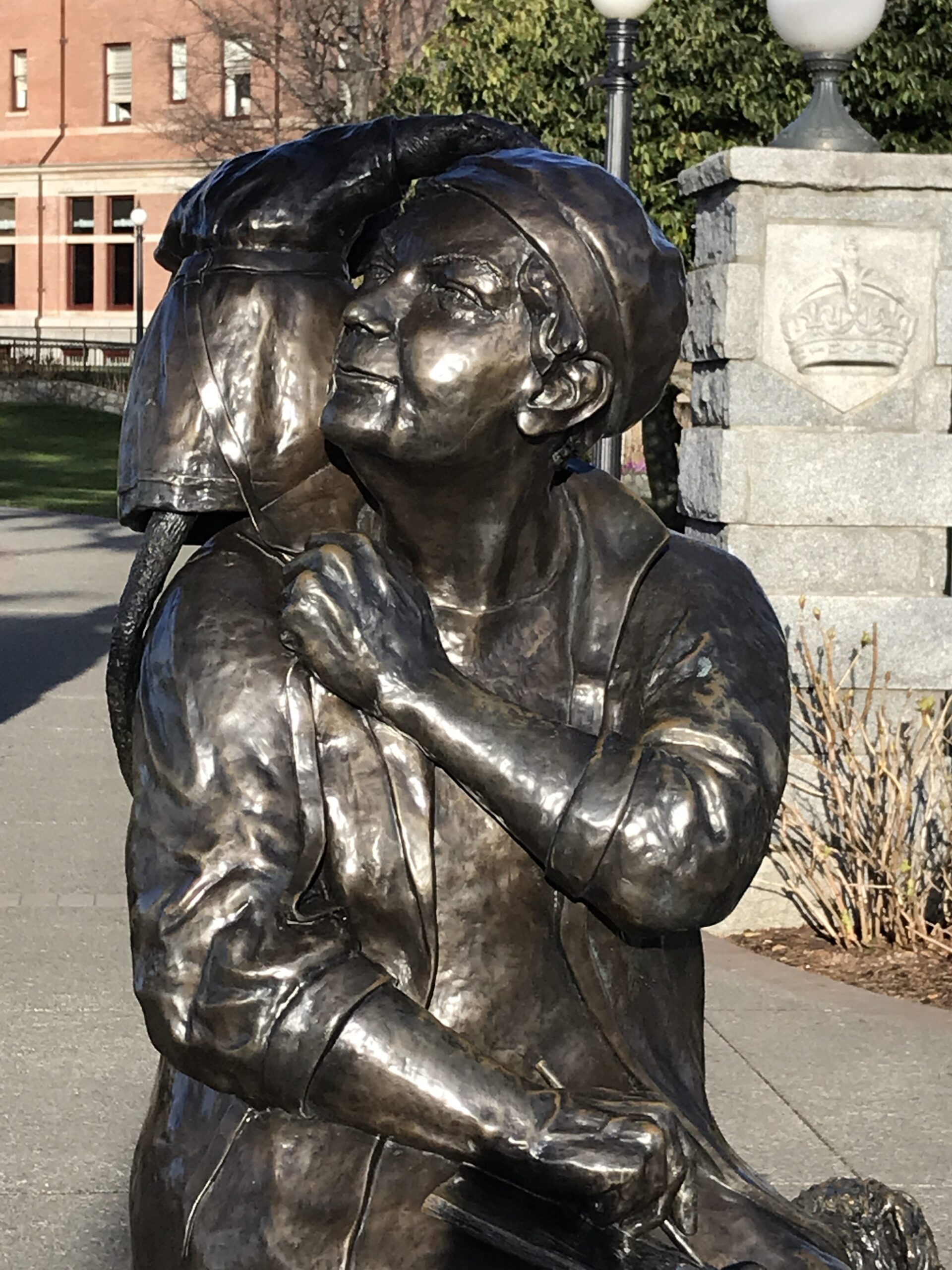“I saw a fair amount of mythological, romantic stories around Emily Carr and her animals. I looked at her writings and the writings of people who knew her, and I could see that there was another side to it. Carr had a need to have her animals with her and not just as pets—I think she really, really needed to have them with her to be a functioning person and, above all, to be a functioning artist. As I say in the book and I can’t stress this enough: animals were the fulcrum of her greatness; they gave her what she needed. They didn’t judge her, they stayed with her, they gave her loyalty, and love. I think, in some respect, they put up with her in a way humans just wouldn’t.
“She could be very difficult. She had a lot of dreams about being an artist and not a lot happened for her, in part due to her gender and partly because Victoria at the time was a backwater. A lady of Emily Carr’s class—comfortable middle class—was suppose to paint china plates and enter them in the fair. They weren’t supposed to do the glorious things that she did—essentially break all the plates in the room. She tended to push people away, and in some cases, for good reason. Animals were always there for her and my feeling is that Carr saw Woo as superior to many of the people she knew. She said her manners in many cases were far superior to those people she knew who were well-mannered people. I think Woo helped her overcome fears that were interfering with her development as an artist.
“Sources make it clear that Carr was treating her like a human child and Woo did act out, I believe, on various occasions, because she wasn’t getting enough attention from Emily and that was her only way of getting close to her. She would pee in Carr’s boots and eat paint—which made her deeply sick on three separate occasions that we know of. Somebody pointed out at one of my readings recently that the paint was almost charged with a type of magic, because Carr paid attention to it, that she used it on a white canvas, and the monkey thought that it must be a special substance because it’s something that Carr cared about. Throughout all of the accounts I found, all these bits and pieces I gathered of encounters with Woo, she was always trying to get closer to Carr. She always wanted to be wherever Carr was. And I think that heightens the tragedy of what happened to her.
“Woo was given to the zoo as Carr fell ill and was deemed unable to take care of her animals—some of them found new homes, but no one wanted Woo, who was sent to the Stanley Park Zoo. Carr had friends who travelled from Victoria to visit Woo from time to time. Some of the ladies recall her throwing herself from one side of the cage to another. Which is not her typical behavior in any description I found about her at home with Carr. I think she was freaking out, she didn’t know where she was. It was an awful place for her to end up and she died within about a year of being brought there.
“I heard about a monkey called Pockets Warhol, who, like Woo, had been a pet in B.C. He was born in 1992 and had a very, rich loving life. When his human mother was unable to look after him, rather than give him to a zoo, she searched all over Canada for the right kind of place and found Story Book Farm Primate Sanctuary in Ontario—the only monkey sanctuary in Canada. It’s a sanctuary that rescues monkeys from laboratory experiments, zoos, the entertainment industry, and some that are abandoned by dealers who use exotic animals.
“When Pockets arrived at Story Book, one of the volunteers gave him children’s paints to play with. The results amazed everyone: Pockets began creating artworks using his tail and feet. His paintings have a following around the world. I wanted to meet Pockets and see his art. Imagine what would have happened if Woo had been sent a place like this?
“So, what more wonderful way to honour Woo, and animals in general, by showing how seriously we take what they do than to have this exhibition of Pockets’ work at Emily Carr’s birth house. I think it’s going to be an interesting experience. I think it’s going to be just magical.”
— As told to Monika Markovinovic
Woo, The Monkey Who Inspired Emily Carr: A Biography by Grant Hayter-Menzies is published by Douglas & McIntyre.
Readings, signings, and an art exhibition including 12 new paintings by Pockets Warhol, will be held at Emily Carr House, Victoria, from June 1 to 8. For more details, visit emilycarr.com.
View more of the Arts.















